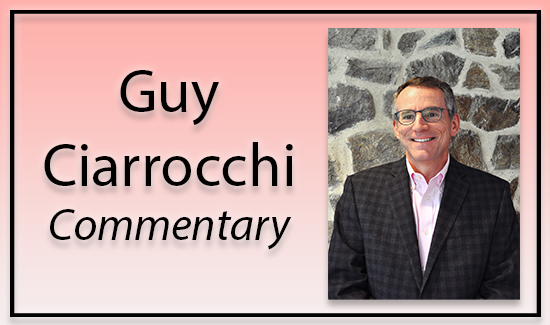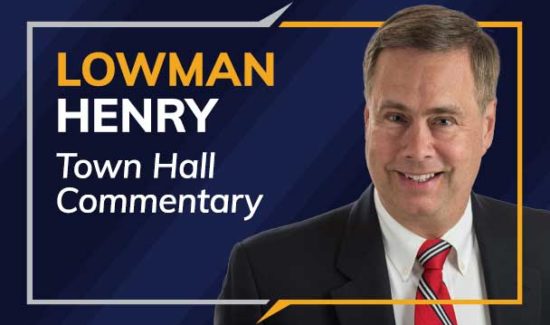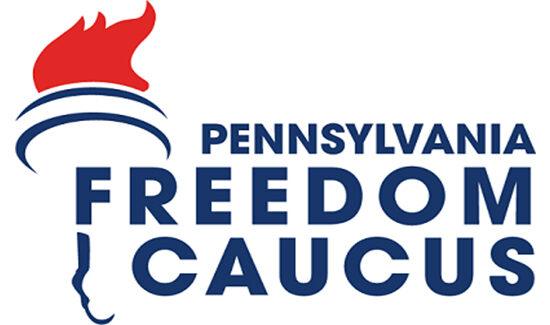Let’s imagine that today a young girl is born in Philadelphia. We’ll call her Opal. We all wish Opal and her family well. As taxpayers, we support various programs to help her become an educated, successful adult — from daycare to preschool, from kindergarten to high school, college, even graduate school. There are countless taxpayer-funded programs to help ensure that Opal learns all she needs to learn to be all that she can be.
Taxpayers support education because we recognize the value in making sure that every child is given the education, tools and support to be successful, self-sufficient and become a productive citizen. Americans have had this social compact since even before our founding, starting with schools supported by churches or local communities.
Today, politics, special interests, and money — billions and billions of dollars in education — caused the focus to move away from ensuring that every child learns and that society benefits.
K-12 education is all too often only about politics, special interests — and money. I stress K-12 education because — due to politics, special interests and money — K-12 education operates very differently than every other form of child care and child (and adult) education. Common sense and the best interests of the child are almost totally missing in K-12 education.
When Opal’s mom returns to work, she may take her to daycare. Depending on their family’s income, they’re likely eligible for a tax credit and maybe even a taxpayer-subsidized daycare. Mom can pick any available daycare. It could be a national or regional chain, church or religious community-based, in a home, or even a non-profit. Whatever she chooses, it’s okay with the government — all tax credits and subsidies apply.
A few years from now, Opal’s mom may want her to attend a preschool, learning to tie her shoes, keep stuff in her “cubby,” learn the ABC’s, colors and count to ten. Again depending on income, there are different government tax credits and subsidies available to Opal’s family — and mom can pick any available preschool. It doesn’t matter if it’s run by a non-profit, is located in a public school, or government building, or inside a church, synagogue or mosque.
Let’s look to the future. About eighteen years from now, Opal might apply to attend college. To help her pay for college, depending on her income, she will be eligible for government-backed student loans and grants, and — depending on her major and eventual line of work — some or all of her student loan debt could be forgiven.
It will not matter if she attends college online at Southern New Hampshire University, Community College of Philadelphia (CCP), Temple University, University of Pennsylvania, West Chester, Brigham Young, Yeshiva or Saint Joseph’s University. Every grant, loan program, and loan-forgiveness program would apply.
Looking back at Opal’s parents’ choices regarding her care and her choice of college, we see countless taxpayer supported programs to help ensure that Opal will be cared for, prepared for school and get a degree to help her find a career, support herself, her family and to be a contributing member of society.
She didn’t “have to” attend a government-run program, center or school. She was allowed to attend private, non-profit, religiously-operated or government run programs and college. Mom and Opal could choose what was best.
No cries about violations of “church and state;” taxpayer dollars propping-up religion; no one complains that daycare operators are “getting rich off the system;” no one fears that Opal would be “indoctrinated” if she attended a religious daycare, preschool or college. If Opal wanted to attend college in order to become an ordained minister or rabbi, all taxpayer-supported programs would support that also. No ranting that by going to Saint Joseph’s, Opal was “taking taxpayer money away from” CCP, West Chester or Temple University.
You may have noticed that we skipped over Opal’s years attending K-12 — kindergarten through high school graduation. Why?
Because of politics, special interests, and “grown-ups” fighting over money, Opal must attend her neighborhood public school. The approximately $22,000 that taxpayers (including Opal’s parents) spend educating a Philadelphia student must be used to attend her neighborhood public school.
Couldn’t Opal attend a charter school? In theory, yes. But charter schools in Philadelphia are at their school-district-imposed enrollment limit. There’s a waiting list of at least 30,000 children. And, the Philadelphia School Board — the government agency that votes on whether a new charter school may open — has not allowed a new school to open since 2018. So it’s very likely that Opal won’t get into a charter school.
Couldn’t she attend a Catholic, Jewish, Quaker or private school? Sure, but only if Opal’s family has the money to afford the tuition — on top of the taxes they pay, including their property taxes which are supposed to help pay for education.
In other words, when it comes to K-12 education, Opal only gets to have a choice if her parents can afford to pay taxes and also tuition.
Apparently, there’s something magical, dangerous or “special” about K-12 education — it’s somehow different from daycare, preschool and college.
The politicians have decided that parents aren’t allowed to find a K-12 school that works for Opal. Her zip code determines the school she must attend; whether it’s good or bad, new or old, safe or unsafe — even if the Department of Education knows by its own data that literally no fourth grader there is proficient in math or reading.
When it comes to daycare or preschool, government and society trust mom to do what’s best — and politicians will gladly use taxpayer money for any provider. When it comes to college, politicians will use taxpayer dollars to allow Opal to go literally anywhere she can get into.
But when it comes to K-12 education, politicians and their special interests suddenly become very focused-on the name on the school building; but apparently not very concerned about what goes on inside the building. Nonetheless, Pennsylvania taxpayers will spend approximately $40 billion on public school K-12 education.
Opal has no choice when it comes to her K-12 education. According to the Department of Education, the schools rated in the bottom fifteen percent are “educating” nearly 250,000 each year — almost all of whom are financially trapped with nowhere else to go.
The Pennsylvania House — with the unanimous support of House Democrats and a few Republicans — voted to cut up to 50 percent of the funding for cyber charter schools, where over 70,000 students attend because their parents or guardians chose that school.
The Pennsylvania House — with the unanimous support of House Democrats — defeated “Lifeline” scholarships, legislation to allow the poorest children trapped in those worst schools to use a scholarship to attend another school.
Parents care about their children and what happens inside the school and whether their child is being educated and prepared to succeed.
Some politicians — pressured by their allies and their funders — seem uniquely focused-on the name on the K-12 school that children like Opal attend — yet, not Opal’s daycare, preschool or college.
Makes you wonder why.
Guy Ciarrocchi is a Senior Fellow with the Commonwealth Foundation. He writes for Broad+Liberty and RealClear Pennsylvania. Follow Guy @PaSuburbsGuy





